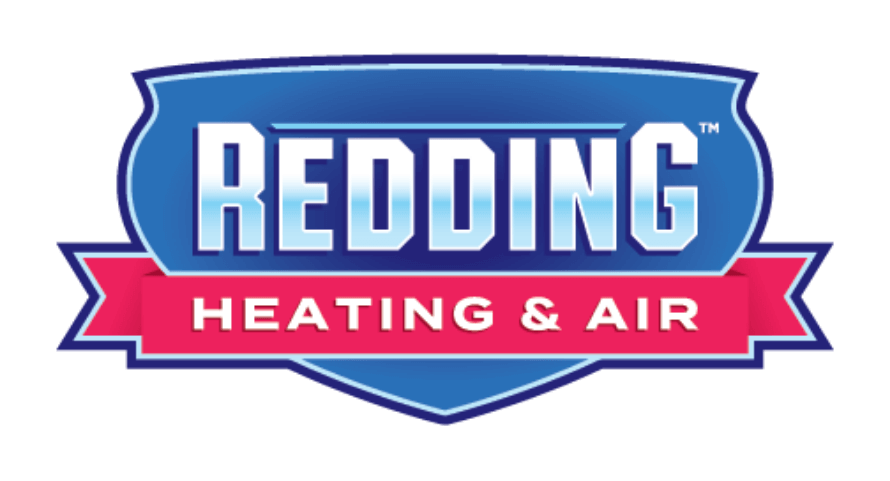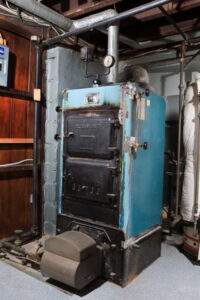Throughout the year your heater plays an important role in keeping your home warm and comfortable, especially during the coldest months. Heaters are not without their limitations however, and after a long period of service they may experience breakdowns. Due to their limited lifespan, they will eventually require replacement, and when that happens it will have you searching for heating installation in Redding, CA and considering the hvac replacement cost to replace your system.
The average costs associated with heating system replacement can vary widely based on factors such as system type, efficiency, and local labor rates. The average cost to replace a furnace is typically between $4,771 and $6,846 including labor and materials. However, furnace replacement costs can range from $2,000 to over $30,000 depending on the type of furnace. HVAC system cost also varies significantly based on the type of system, its efficiency, and local labor rates, so obtaining multiple quotes from contractors is essential to find the best deal. The average cost to replace an HVAC system ranges from $11,590 to $14,100 as of 2025. Additionally, costs can vary based on whether you are replacing a heating system or an AC unit, with considerations such as home size, local climate, and installation costs playing a significant role.
Recognizing the signs that indicate your heater is nearing the end of its operational life can help you avoid unexpected breakdowns and provide continued comfort in your home. Let’s take a look at some of the common signs that suggest it may be time to invest in a new heater.
Introduction to Heating Systems
Heating systems are a crucial component of any home, providing warmth and comfort during the colder months. A well-designed cooling system, such as a central AC, is equally important in maintaining home comfort throughout the year. Central AC systems are integrated into a home’s ductwork to effectively cool the temperature using forced air, and they work in conjunction with heating systems to ensure a comfortable home environment. With various types of heating systems available, including furnaces, heat pumps, and boilers, it’s essential to understand the different options and their characteristics. Heat pumps are the most efficient home heating option available today. Heat pumps take heat from the outside air and move it inside your home. A well-maintained heating system can last longer and be more energy-efficient, reducing energy bills and the need for frequent repairs. When considering a new heating system, factors such as the size of the home, insulation requirements, and local climate conditions should be taken into account to ensure the most efficient replacement. Additionally, ductwork installation plays a significant role in the efficiency of heating and cooling systems, as outdated or damaged ductwork can impact overall performance and may require replacement during upgrades. New ductwork installation can add additional cost to HVAC replacement projects, potentially ranging from $2,100 to $4,000.
Types of Heating Systems
When it comes to keeping your home warm and cozy, there are several types of heating systems to choose from, each with its own set of benefits and drawbacks. Understanding these options can help you make an informed decision that best suits your home and lifestyle. The size of your home, measured in square feet, also influences the installation costs and requirements for HVAC units.
AC systems, including central air conditioning and ductless split AC units, are popular for their efficiency and ease of installation. Central AC systems are ideal for whole-home cooling, though they require ductwork and can be more expensive to install. Ductless split AC units, on the other hand, offer a simpler installation process and are perfect for cooling individual rooms or smaller spaces. Both types of air conditioners are essential for maintaining a comfortable indoor environment, especially when integrated with heat pump technology.
Furnaces are one of the most common heating systems found in homes today. They can be powered by natural gas, electricity, or oil, making them versatile and widely available. Gas furnaces are particularly popular due to their high efficiency and reliability, especially in areas where natural gas is readily accessible. Gas furnaces utilize a blower to push heated air via ductwork, ensuring even distribution of warmth. However, the inefficiency of hot air traveling through ductwork can lead to energy loss.
Heat pumps are another excellent option, known for their energy efficiency and dual functionality. Unlike traditional heating systems, heat pumps can provide both heating and cooling, making them a versatile choice for year-round comfort. They work by transferring heat from the outside air into your home during the winter and reversing the process in the summer to cool your home. Heat pumps provide beautifully even and non-stuffy heating throughout your home.
Boilers, which use hot water or steam to heat your home, are often found in older homes. They provide a consistent and comfortable heat, and can be powered by natural gas, oil, or electricity. While they may have higher installation costs, boilers are known for their durability and long lifespan. Oil furnaces, similar to gas furnaces, are favored in colder northern regions of the U.S. for their quieter operation and cost-efficiency, despite higher initial installation costs.
Radiant heating systems, which use heated water or electric coils to warm floors, are another option. These systems provide a comfortable and even heat, but can be more expensive to install and may require significant modifications to your home. Radiant heat is particularly effective in heating both the floor and surrounding furnishings, enhancing overall comfort.
Electric resistance heating, including wall and baseboard heaters, offers an affordable and effective solution for localized heating needs in individual rooms. This type of heating is ideal for supplemental heating, providing targeted warmth where needed.
Each of these heating systems has its own unique characteristics, and the best choice for your home will depend on factors such as your local climate, energy costs, and personal preferences.
Is Your Heater Too Old? Signs Based on Age
One of the more obvious signs that you may need a new heater is its age. Most furnaces have a lifespan of around 20–30 years, but they typically begin to lose efficiency after about 15 years. Most furnaces require replacement after about 15 to 20 years of service. This can depend on factors such as usage and maintenance. The average lifespan of HVAC systems is typically between 15 to 30 years. If your system is approaching or exceeding this age range, it’s likely nearing the end of its operational life and may be less efficient and more prone to breakdowns. Heating systems typically need to be replaced after approximately 15 years, especially if they show signs of efficiency loss and frequent breakdowns.
Rising Energy Bills May Point to Heater Inefficiency
If you notice a sudden and unexplained increase in your energy bills it could be a sign that your heater is struggling to operate efficiently. Older heaters often become less efficient over time, and this leads to higher energy consumption and increased heating costs. For insights on how to control these expenses, read our guide on ways we can help you save money on your winter heating. Investing in a new energy-efficient system can help lower your utility bills and save you money in the long run.
Constant Repairs Could Signal Heater Failure
As heaters age they may require more frequent repairs as components wear out and break down. If you find yourself calling for repairs multiple times a year or if the cost of repairs exceeds the value of the heater, it may be more cost effective to invest in a new unit. Continuously patching up an old heater can end up being more expensive in the long term than replacing it with a newer and more reliable model. If you’re still on the fence, explore why upgrading your heater today might be a smarter long-term decision.
Uneven Heating? Your System May Be Failing
If you notice that certain areas of your home are consistently colder than others, or if you’re constantly adjusting the thermostat to maintain a comfortable temperature it could mean that your heater is struggling. This could be due to worn-out components or inadequate sizing for your home’s heating needs. Upgrading to a new heater that is properly sized and equipped to provide even heating throughout your home can improve comfort and energy efficiency.
Odd Heater Noises You Shouldn’t Ignore
Unusual noises coming from your system like banging, rattling or squealing are often a sign of mechanical problems or worn-out components. Ignoring these noises can lead to further damage and costly repairs. If your heater is making strange noises, it’s best to have it inspected by a qualified HVAC technician. These sounds might also signal deeper issues—learn about 6 sounds you don’t want your heater to make to better understand when it’s time to act. They will determine if repairs are needed or if it’s time to replace the unit.
Recognizing the signs that indicate you may need a new heater is important for maintaining comfort and efficiency in your home. Paying attention to these indicators can help you avoid unexpected breakdowns and make sure that your home stays warm and comfortable throughout the heating season.
Heat Exchanger Problems
A heat exchanger is a critical component of a heating system, responsible for transferring heat from the furnace to the air that circulates throughout your home. When functioning correctly, it ensures that your home remains warm and comfortable. However, problems with the heat exchanger can lead to a range of issues, including reduced energy efficiency, increased energy bills, and even safety hazards such as carbon monoxide leaks.
One common issue with gas furnaces is a cracked heat exchanger. This can occur due to various factors, including corrosion, overheating, and poor maintenance. A cracked heat exchanger not only reduces the efficiency of your heating system but also poses significant safety risks. Carbon monoxide, a colorless and odorless gas, can leak into your home, leading to potentially deadly consequences.
If you suspect that your heat exchanger is cracked, it’s essential to have it inspected and replaced by a qualified HVAC professional as soon as possible. The cost of replacing a heat exchanger can vary depending on the type and size of the furnace, as well as the complexity of the installation. However, in many cases, it may be more cost-effective to replace the entire furnace rather than just the heat exchanger.
Regular maintenance, including annual inspections and routine cleaning, can help prevent heat exchanger problems and extend the lifespan of your heating system. In addition to heat exchanger issues, other factors such as ductwork installation, air leaks, and thermostat calibration can also affect the efficiency and safety of your heating system. If you’re experiencing issues with your heating system, it’s best to consult with a local HVAC professional who can assess the situation and provide recommendations for repair or replacement.
By addressing heat exchanger problems promptly and ensuring regular maintenance, you can maintain a safe, efficient, and comfortable home heating environment.
Safety Concerns
Safety is a top priority when it comes to heating systems. Installation requirements for heating systems vary based on the size, type, and efficiency of the units, and it is crucial to follow code standards to ensure safety. A cracked heat exchanger, gas leaks, or carbon monoxide poisoning can be deadly. Regular maintenance, including annual inspections, can help identify potential issues before they become major problems. Heat pumps are safer since there are no risks of gas leaks or carbon monoxide. A home warranty can help cover the costs of furnace replacement in case of breakdowns. It’s also crucial to be aware of unusual noises, excessive dust, or strange smells, as these can be indicators of a larger issue. Homeowners should never attempt to repair or install a heating system themselves, as this can lead to costly repairs, injuries, or even fatalities. Instead, it’s best to hire a professional HVAC technician to ensure the job is done safely and efficiently. Having heating systems installed by qualified HVAC professionals ensures compliance with safety standards and optimal performance.
Heating System Options
Choosing the right heating system for your home involves considering several factors, including energy efficiency, installation costs, and maintenance requirements. Here’s a closer look at some of the most popular options:
Electric furnaces are a great choice for homes that do not have access to natural gas. They are known for their lower installation costs and ease of maintenance. However, they can be more expensive to operate due to the higher cost of electricity compared to natural gas.
Gas furnaces, on the other hand, are highly efficient and reliable, making them a popular choice for homes with access to natural gas. They tend to have lower operating costs compared to electric furnaces, but the initial installation costs can be higher.
Heat pumps are an increasingly popular option for homeowners looking to reduce their energy bills and carbon footprint. Known for their energy efficiency and versatility, heat pumps can provide both heating and cooling, making them a cost-effective solution for year-round comfort. They are particularly effective in moderate climates but can be paired with a supplemental heating source in colder regions. Heat pumps are fully electric and energy-efficient.
When choosing a heating system, it’s essential to consider not only the initial installation costs but also the long-term operating costs and maintenance requirements. Regular maintenance, including annual inspections, is crucial to ensure the longevity and efficiency of your heating system. This can help prevent costly repairs and replacements down the line.
A professional HVAC technician can provide valuable guidance on selecting the best heating system for your home and budget. They can also help with routine maintenance and repairs, ensuring your system operates efficiently and reliably.
By carefully considering your options and investing in regular maintenance, you can enjoy a warm and comfortable home while also reducing your energy bills and environmental impact. Don’t forget to factor in the cost of replacing your heating system, including the price of a new furnace, installation costs, and any additional features or upgrades you may want to include.
Benefits of a New Heating System
Installing a new heating system can have numerous benefits, including improved energy efficiency, reduced utility bills, and a longer lifespan. For homes without natural gas access, an electric furnace offers a cost-effective and easier-to-install alternative. Newer systems are designed to be more efficient, using less energy to heat the home, which can lead to significant cost savings. High-performance heat pump systems provide excellent lifetime value for most people. Heat pumps are the best bet for energy-efficient home heating. Additionally, 81% say their home comfort has improved by replacing their fossil fuel heaters with heat pumps. A new heating system can increase the value of a home, making it more attractive to potential buyers. With the latest technology and advancements in heating systems, homeowners can enjoy a more comfortable and healthy living environment. A new heating system can also provide better air quality, reducing the risk of respiratory problems and other health issues.
Conclusion and Next Steps
In conclusion, heating systems play a vital role in maintaining a comfortable and safe living environment. Installing a new HVAC system can provide numerous benefits, including improved energy efficiency and enhanced comfort. When considering a new heating system, it’s essential to weigh the costs and benefits, taking into account factors such as energy efficiency, installation costs, and maintenance requirements. It’s also important to consider HVAC installation costs and obtain multiple quotes from qualified contractors to ensure competitive pricing. Homeowners should research different types of heating systems, including heat pumps, furnaces, and boilers, to determine the best option for their home and budget. By hiring a professional HVAC technician and investing in a new heating system, homeowners can enjoy a more efficient, safe, and comfortable home, while also reducing their energy bills and environmental impact. The next step is to consult with local contractors, compare prices, and schedule a consultation to determine the best course of action for replacing or installing a new heating system.



